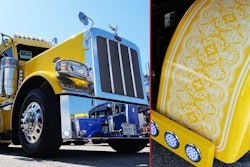Heat therapy can be an inexpensive and effective way to deal with some types of pain, especially back and neck pain, in addition to over-the-counter medications.
Heat therapy can be an inexpensive and effective way to deal with some types of pain, especially back and neck pain. Those ailments are common in trucking, due to lifting and carrying, getting in and out of trucks, and sitting for long periods.
Heat treatments relax your muscles and send soothing signals to your brain. Heat increases the flow of oxygen and nutrients, which helps heal damaged muscle tissue.
“Pain is a byproduct of inflammation, so improved blood flow washes out a lot of metabolic byproducts from around the injury and increases the flexibility of those tissues,” says Dr. Scott Nadler, an associate professor at New Jersey Medical School in Newark, N.J.
Heat can be used with chronic pain, which can last for months or years, or acute pain, which occurs after an injury to muscle, ligaments or tendons, bones, joints or skin.
Dry heat, such as from electric heating pads and saunas, can be the easiest to apply, but it can also draw moisture out, drying the skin. Moist heat, such as a hot bath, steamed towels or moist heating packs, may penetrate better into the muscles.
A fairly new option is a heat wrap that sticks to your body, such as those sold by ThermaCare. They are air-activated and can be applied while you do other things, so you don’t need to worry about the limitations or inconveniences of other dry or moist heat therapies. They stay warm for at least eight hours. Read directions carefully to know whether the heat can be applied directly to skin or if insulation is necessary. You can get about three heat wraps for $3 to $8 in most drug stores.
Heat therapy can be used in conjunction with other pain relievers, such as over-the-counter pills, but it’s not a good idea to use heat creams or rubs in addition to the heat pad.
There are circumstances in which heat should not be used, such as if the lower back is bruised or swollen. Dermatitis, deep vein thrombosis, diabetes and open wounds are also unsuitable for heat therapy. “If you have fallen and landed on your back or been struck in the back, ice is appropriate for the first 24 hours, but for simple muscle strains, heat is equally as important,” Nadler says.
In general, if the injured area is swollen or bruised, it is better to apply ice or a cold pack to reduce inflammation. Even when there is no visible swelling, many joint pains are best treated by cold to reduce inflammation of ultra-thin joint membranes.
EASY LIFTING
When lifting, even light objects, follow these guidelines to protect your back:
HELP IS AVAILABLE OVER THE COUNTER
The two main types of non-prescription pain relievers are acetaminophen and nonsteroidal anti-inflammatory drugs (NSAIDs).
category.








